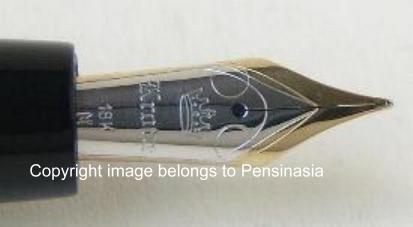|
|

|
|
|
KRONE
LIMITED EDITION
GENERAL GEORGE ARMSTRONG CUSTER FOUNTAIN PEN |
|
|
|
|
KRONE
LIMITED EDITION
GENERAL GEORGE ARMSTRONG CUSTER FOUNTAIN PEN



KRONE
LIMITED EDITION
GENERAL GEORGE ARMSTRONG CUSTER FOUNTAIN PEN
A generation after the Battle of the Little Bighorn, Teddy Rooseveltís
reflection on how to approach life perfectly captured the ethos of General
George Armstrong Custer. Custer was and is a bigger-than-life American war
hero who lost his life in one of the most famous battles in American
history. He was a controversial figure in life and continues to be one in
death.
On the afternoon of June 25, 1876, Custerís 675-man US 7th Cavalry, a
renowned and undefeated military unit, wildly attacked a Sioux Indian
village of 10.000 people and 6000 warriors. The Sioux, led by Chief Sitting
Bull, flew into battle and massacred the 176-man detachment led by Custer
that had separated from the main regiment. The battle was over in twenty
minutes, with Custer and his men all lying dead.
Custer and his men had been dispatched from Fort Abraham Lincoln on a search
and destroy mission to find and kill Sitting Bullís tribe. Through a
combination of poor reconnaissance and hubris, he had little idea that he
would be attacking the largest aggregation of Indians ever assembled on the
North American continent. As the 7th Cavalry rode west into the Dakota
Territory, they discovered bad omens regarding the battle to come: the
decapitated head of a bluecoat infantry man mounted on a stick; a drawing of
soldiers dying at the hands of the Indians that was left in a sweat lodge;
and, most importantly, the remnants of a Sun Dance, which the Sioux would
perform in preparation for going on the war path. The superstitious
soldiersí spirits sunk when they saw these signs of impending death.
George Armstrong Custer is a mythological figure in the history of the US
military. He was indeed a brave, fierce soldier who won every battle he was
ever in, save for the last one. He was a leader of men, seducer of women and
lover of sport, at once charismatic and flamboyant. But his alter ego was
reckless, arrogant and ruthless, with the soul of a killer. He was a
relentless fighting man. In this, he had the respect of the great Indian
warriors, who admired bravery in battle and took no prisoners themselves.
For them, battle meant either victory or death. And for Custer at the Little
Bighorn, it was death at the hands of the people he both hated and admired.
The ones who had christened him Son of the Morning Star, his favorite
moniker.
Krone presents General George Armstrong Custer, an exceptional handcrafted
writing instrument.
Crafted out of genuine horn, the cap displays handsome striations of the
natural material. The cap is topped with sterling silver, which encapsulates
two exceptional historical artifacts; a fragment of General George Armstrong
Custerís personal powder horn and a fragment of bead from one of Sitting
Bullís camps. Side by side, these artifacts are tied together as Custer and
Sitting Bull were in life and legend. A band featuring Custerís autograph is
at the base of the cap.
The barrel features the boldly hand painted scene of ďCusterís Last StandĒ,
depicting Custer surrounded by Indians at The Battle of Little Big Horn.













KRONE LIMITED EDITION
GENERAL GEORGE ARMSTRONG CUSTER FOUNTAIN PEN |
|
